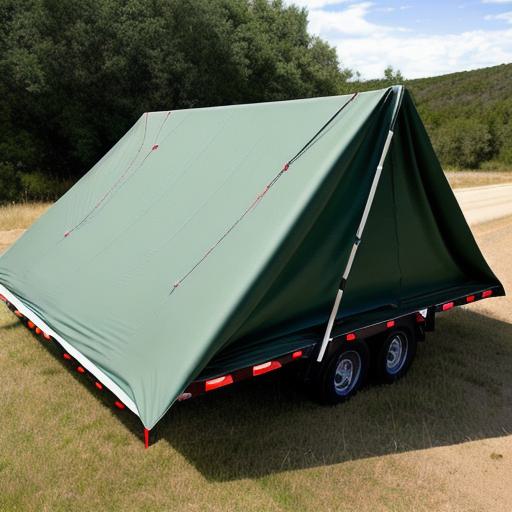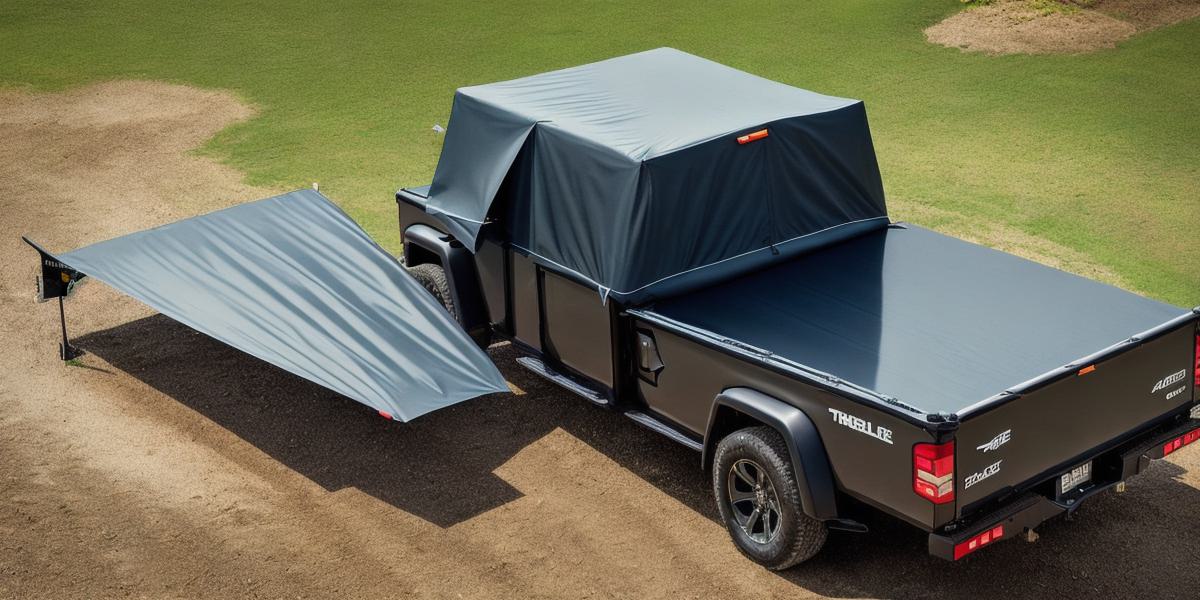As a truck driver, loading and transporting goods can be a daunting task. One of the most critical aspects of this job is making sure that your load is properly secured and protected from damage during transportation. Tarp and covering a flatbed trailer load is a crucial step in ensuring that your goods arrive at their destination safely and undamaged. In this article, we will explore the importance of tarp and covering a flatbed trailer load, as well as provide you with tips on how to do it correctly.
The Importance of Tarp and Covering a Flatbed Trailer Load
Tarp and covering a flatbed trailer load is essential for several reasons. Firstly, it helps to protect your goods from damage during transportation. Flatbed trailers are exposed to the elements, which means that they are susceptible to wind, rain, snow, and other weather conditions that can damage your load. Tarp provides an extra layer of protection against these elements, ensuring that your goods remain safe and secure during transit.
Secondly, tarp and covering a flatbed trailer load helps to reduce the risk of theft and vandalism. When goods are exposed on a flatbed trailer, they are more vulnerable to theft and vandalism. Tarp provides an extra layer of protection against these threats, reducing the likelihood of your goods being stolen or damaged by unauthorized individuals.

Thirdly, tarp and covering a flatbed trailer load can help you save money in the long run. By protecting your goods during transportation, you can prevent damage that may require expensive repairs or replacements down the line. This can save you a lot of money, especially if you are transporting valuable goods.
Tips for Properly Tarp and Covering a Flatbed Trailer Load
Now that we have discussed the importance of tarp and covering a flatbed trailer load, let’s take a look at some tips on how to do it properly.
- Choose the right type of tarp
There are different types of tarp available in the market, and it is essential to choose the right one for your needs. The most common types of tarp include canvas tarp, polypropylene tarp, and vinyl tarp. Canvas tarp is the best option if you need a strong and durable tarp that can withstand harsh weather conditions. Polypropylene tarp is lightweight and easy to handle, making it ideal for short distances. Vinyl tarp is waterproof and resistant to UV rays, making it suitable for transporting goods that are sensitive to sunlight or moisture.
- Secure the tarp correctly
Securing the tarp correctly is essential to ensure that your goods remain safe and secure during transportation. You can use various methods to secure the tarp, such as using rope, straps, or clips. Make sure to tighten the securing devices tightly enough so that they do not come loose during transit.
- Use a tarps cover
A tarps cover is a device that can be used to cover the tarp, providing an extra layer of protection against wind and other elements. Tarps covers are particularly useful when transporting goods over long distances or in areas with high winds. Make sure to secure the tarps cover tightly so that it does not come loose during transit.
- Use a load net
A load net is a piece of equipment that can be used to secure your goods to the flatbed trailer. Load nets are particularly useful when transporting heavy or bulky items, as they help to distribute the weight evenly and prevent the load from shifting during transit. Make sure to use the right type of load net for your specific needs.
- Check the weather forecast
Before embarking on a long-distance trip, it is essential to check the weather forecast to ensure that the conditions will be suitable for your journey. If you are expecting high winds or heavy rain, you may need to take extra precautions to ensure that your goods remain safe and secure during transit. Consider using additional equipment such as tarps covers or load nets to provide extra protection.
- Properly stow your equipment
When loading your flatbed trailer, it is essential to properly stow your equipment to ensure that it remains safe and secure during transportation. Make sure to use the right type of equipment for the job, such as using straps or chains to secure heavy items. Additionally, make sure to load your equipment evenly to prevent it from shifting during transit.
- Conduct regular inspections
Finally, it is essential to conduct regular inspections of your flatbed trailer and its contents to ensure that everything is in good condition and properly secured. This can help you identify potential problems before they become major issues, such as loose securing devices or damaged goods.
With these tips in mind, you can ensure that your flatbed trailer load is properly protected and ready for safe transportation. Remember that it is always better to be safe than sorry, so take the time to do things right the first time.



